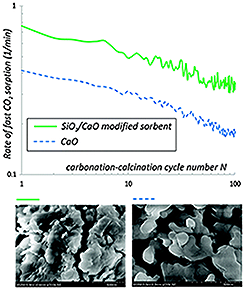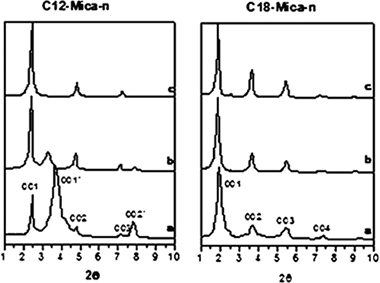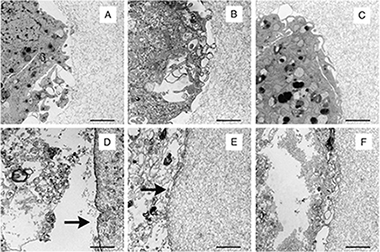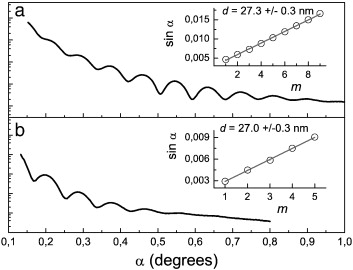Artículos SCI
2012
2012
Reactividad de Sólidos
Enhancement of Fast CO2 Capture by a Nano-SiO2/CaO Composite at Ca-Looping Conditions
Valverde, JM; Perejon, A; Perez-Maqueda, LAEnvironmental Science and Technology, 46 (2012) 6401-6408
Show abstract ▽

In this paper we show the performance of a new CO 2 sorbent consisting of a dry physical mixture of a Ca-based sorbent and a SiO 2 nanostructured powder. Thermo-gravimetric analysis (TGA) performed at conditions close to the Ca-looping process demonstrate that the rate of CO 2 capture by the mixture is enhanced during the fast carbonation stage of practical interest in applications. Moreover, the residual capture capacity of the mixture is increased. SEM/EDX, physisorption, and XRD analyses indicate that there is a relevant interaction between the nanostructured SiO 2 skeleton and CaO at high temperatures, which serves to improve the efficiency of the transfer of CO 2 to small reactive pores as well as the stability of the sorbent pore structure.
Junio, 2012 | DOI: 10.1021/es3002426
Reactividad de Sólidos
Development of multicomponent-multiphase materials based on (Ti,Ta,Nb)CxN1-x carbonitride solid solutions
Cordoba, JM; Chicardi, E; Gotor, FJChemical Engineering Journal, 192 (2012) 58-66
Show abstract ▽

A set of powdered cermets based on (Ti,Ta,Nb)C xN 1-x carbonitride solid solutions were synthesized from mixtures of elemental powders by a mechanically induced self-sustaining reaction (MSR) method and subsequently sintered using a pressureless method. Differing nominal compositions of the hard phase were used, and the nature of the metallic-binder phase (Co, Ni, or Co-Ni) was varied. For comparative purposes, the design of the material was performed using two different synthesis pathways. The composition and microstructure of the ceramic and binder phases before and after sintering were analyzed and related to the microhardness of the material, which was found to increase with increasing contiguity of the hard phase and with decreasing particle size.The samples synthesized in one step (SERIES 2) showed higher microhardness and a more homogeneous microstructure with smaller particle size of the hard phase due to the presence of Ti, Ta, and Nb in the molten binder that hindered ceramic growth during liquid phase sintering.
Junio, 2012 | DOI: 10.1016/j.cej.2012.03.046
Materiales de Diseño para la Energía y Medioambiente
Synthetic high-charge organomica: Effect of the layer charge and alkyl chain length on the structure of the adsorbed surfactants
Pazos, MC; Castro, MA; Orta, MM; Pavon, E; Rios, JSV; Alba, MDLangmuir, 28 (2012) 7325-7332
Show abstract ▽

A family of organomicas was synthesized using synthetic swelling micas with high layer charge (NanSi8-nAlnMg6F4O20 center dot XH2O, where n = 2, 3, and 4) exchanged with dodecylammonium and octadecylammonium cations. The molecular arrangement of the surfactant was elucidated on the basis on XRD patterns and DTA. The ordering conformation of the surfactant molecules into the interlayer space of micas was investigated by C-13, Al-27, and Si-29 MAS NMR The arrangement of alkylammonium ions in these high-charge synthetic micas depends on the combined effects of the layer charge of the mica and the chain length of the cation. In the organomicas with dodecylammonium, a transition from a parallel layer to a bilayer-paraffin arrangement is observed when the layer charge of the mica increases. However, when octadecylammonium is the interlayer cation, the molecular arrangement of the surfactant was found to follow the bilayer-paraffin model for all values of layer charge. The amount of ordered conformation all-trans is directly proportional of layer charge.
Mayo, 2012 | DOI: 10.1021/la300153e
Materiales para Bioingeniería y Regeneración Tisular
Tuning liver stiffness against tumours: An in vitro study using entrapped cells in tumour-like microcapsules
Leal-Egana, A; Fritsch, A; Heidebrecht, F; Diaz-Cuenca, A; Nowicki, M; Bader, A; Kas, JJournal of the mechanical behavior of biomedical materials, 9 (2012) 113-121
Show abstract ▽

Liver fibrosis is a reversible pathology characterized by the up-regulated secretion and deposition of ECM proteins and inhibitors of metalloproteinases, which increase the stiffness and viscosity of this organ. Since recent studies have shown that fibrosis preceded the generation of hepatocellular carcinomas, we hypothesize that liver fibrosis could play a role as a mechanism for restricting uncontrolled cell proliferation, inducing the mortality of cancer cells and subsequent development of primary tumours.
With this purpose, in this work we analysed in vitro how the modulation of stiffness can influence proliferation, viability and aggregation of hepatocarcinoma cells (HepG(2)) embedded in 3D micromilieus mimicking values of elasticity of fibrotic liver tissues.
Experiments were performed by immobilizing up to 10 HepG(2) cells within microcapsules made of 0.8%, 1.0% and 1.4% w/v alginate which, besides having values of elasticity from the lower-healthy to the upper-fibrotic range liver tissues, lacked domains for proteases, mimicking the micromilieu existing in hepatic primary tumours.
Our results show that entrapped cells exhibited a short duplication phase followed by an irreversible decay stage, in which cell mortality could be mediated by two mechanisms: mechanical stress, in the case of cells entrapped in a stiffer micromilieu; and mass transfer limitations produced by pore coarsening at the interface cell-matrix, in softer micromilieus.
According to the authors' knowledge, this work represents the first attempt to elucidate the role of liver fibrosis during Hepatocarcinoma pathologies, suggesting that the generation of a non-biodegradable and mechanically unfavourable environment surrounding cancer cells could control the proliferation, migration of metastatic cells and the subsequent development of primary tumours.
Mayo, 2012 | DOI: 10.1016/j.jmbbm.2012.01.013
Nanotecnología en Superficies y Plasma
Attenuation lengths of high energy photoelectrons in compact and mesoporous SiO2 films
Ferrer, FJ; Gil-Rostra, J; Gonzalez-Garcia, L; Rubio-Zuazo, J; Romero-Gomez, P; Lopez-Santos, MC; Yubero, FSurface Science, 606 (2012) 820-824
Show abstract ▽

We have experimentally evaluated attenuation lengths (AL) of photoelectrons traveling in compact and micro and mesoporous (∼ 45% voids) SiO 2 thin films with high (8.2-13.2 keV) kinetic energies. The films were grown on polished Si(100) wafers. ALs were deduced from the intensity ratio of the Si 1s signal from the SiO 2 film and Si substrate using the two-peaks overlayer method. We obtain ALs of 15-22 nm and 23-32 nm for the compact and porous SiO 2 films for the range of kinetic energies considered. The observed AL values follow a power law dependence on the kinetic energy of the electrons where the exponent takes the values 0.81 ± 0.13 and 0.72 ± 0.12 for compact and porous materials, respectively.
Mayo, 2012 | DOI: 10.1016/j.susc.2012.01.017
- ‹ anterior
- 331 of 422
- siguiente ›














